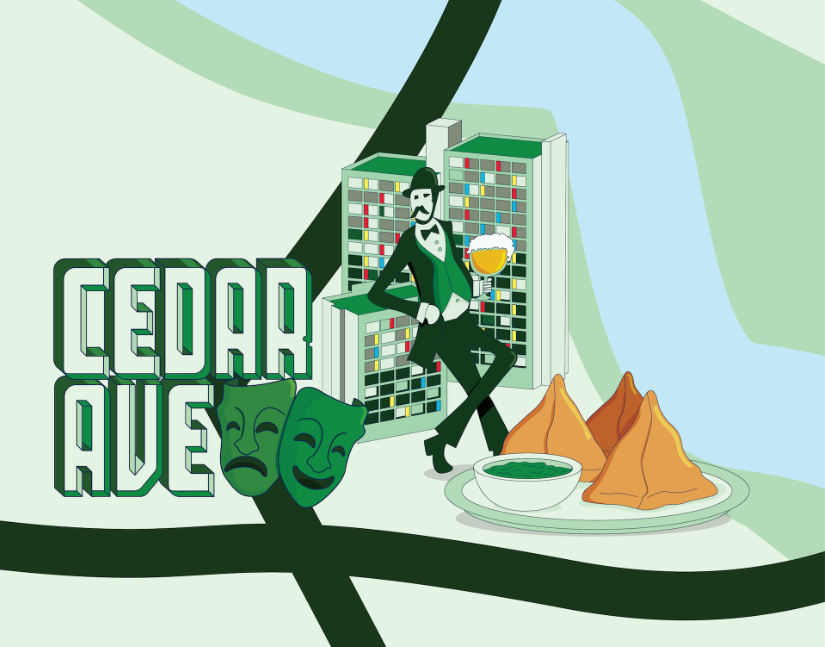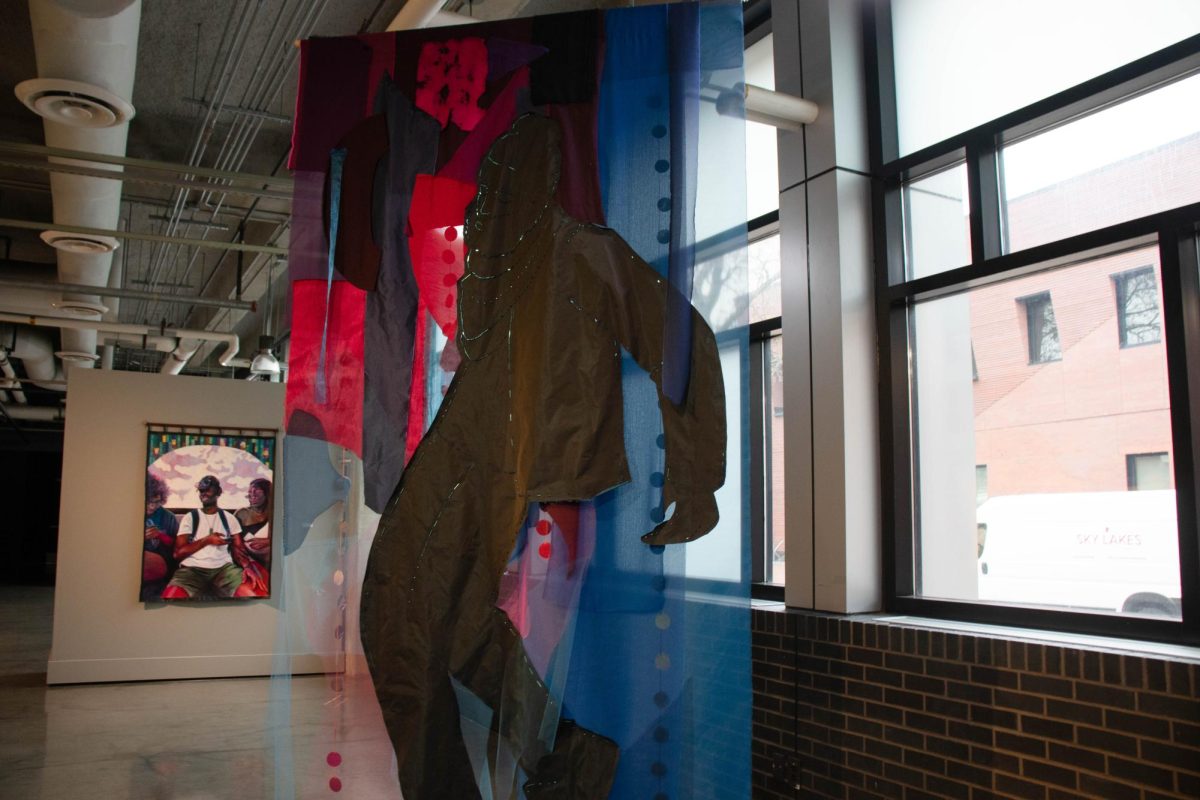Up close, it’s hard not to be impressed by the virtuosity of the paintings. The textured layers of oil paint and deceptively simple but minute details reveal the skill of a master artist at the peak of his powers.
But step back a couple of feet to get a good look at the picture in its entirety, and Fritz Hirschberger’s paintings are likely to make a person more than a little queasy.
“Indifference: The Sur-Rational Paintings of Fritz Hirschberger,” showing now at the Katherine E. Nash Gallery, is a powerful collection of Holocaust-themed paintings that one can’t help but call very good, even if the grim subject matter makes the word “good” seem so badly out of place.
Although the Jewish Hirschberger, who died in 2004 at age 93, was able to escape the Holocaust by fighting for the Polish “Anders” resistance army, the massacre of his peers clearly had a profound effect on the creative output of the native of Germany.
He began to paint on the Holocaust about 1980, after researching some of the geopolitical actions (and perhaps more importantly, inactions) that led to the massacre. Although the paintings in some respects are extraordinarily surreal, each is logically constructed to document some aspect of the Holocaust – hence the name, Sur-Rational.
Many of the paintings resemble Renaissance-era Christian works, with deep, purplish colors and the iconography of the cross showing up repeatedly.
Whereas the Renaissance masters went to great pains to produce works which looked as realistic as possible, Hirschberger’s paintings are slightly askew. Heads are bald, with crooked eyes, bodies are emaciated and the floors are slanted.
Most disturbing is the way Hirschberger renders facial expressions. “The Hypocritical Oath” features a crew of Nazi doctors experimenting on a live man who lies naked on a table. The doctors’ faces are nearly blank, with only the most subtle hints of emotion. Two of them seem to have slight grins on their faces while two others focus intently on the procedure, almost like students. But the reluctant face of the man actually holding the scalpel displays a trace of sorrow.
“The Hypocritical Oath” features another one of the trademark images of the exhibit: a system of pulleys controls the arms of the doctor performing the operation, while the grinning man overseeing the procedure controls them, his hands on the ropes.
The mechanical nature of the entire tragedy is one of Hirschberger’s themes. While individual examples of human cruelty, ignorance and despair are prevalent, the larger operations of church and state bear the brunt of the responsibility. This brings the focus solidly back to the title of the exhibit, “Indifference.”
“Indifference” also is the name of the first painting on display. The picture features a barbed-wire fence shaped into lines by Yiddish poet Edward Yashinsky, which read, “Fear not your enemies, for they can only kill you / Fear not your friends, for they can only betray you / Fear only the indifferent, who permit the killers / and betrayers to walk safely on earth.”
It’s this message that gives the
collection its poignancy. Although
the Holocaust might be the most
brutal event in history, it nevertheless is only a single brutal event in history.
But indifference, appeasement and taking the path of least resistance – these are timeless themes, which will always resonate. They are permanent fixtures of human nature.
At a time when international politics is a veritable powder keg – genocide in Africa, war in the Middle East, state-sponsored terrorism the world over – the question on everyone’s lips in the United States over the past several weeks has been “What does Suri Cruise look like?” (Thanks, Vanity Fair, for cracking the case on that one. Once again, we can all sleep at night.)
Perhaps it’s not fair to expect people to be concerned all the time, but it doesn’t hurt to question our priorities. “Indifference” certainly does that, at least for the time it takes to observe and digest the exhibit.
Hirschberger’s paintings do what great “political” art always does. It tells the story, but – far more than newspapers or history books – tells it in such a way that it points to timeless truths that move beyond the events themselves.
These pictures resonate because they could be happening right now.







